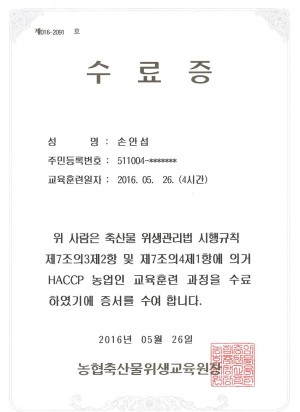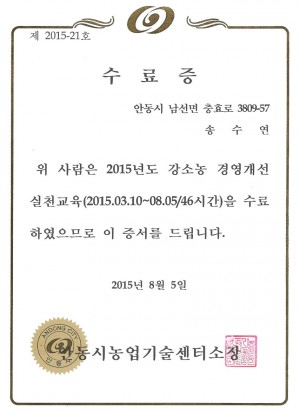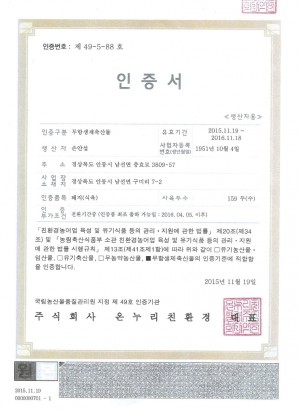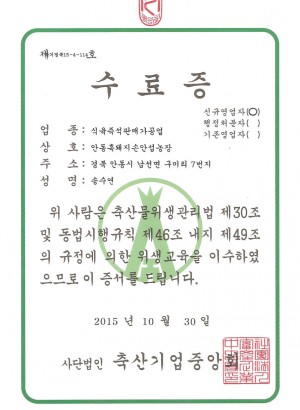[등심]How to Create Successful Adhd In Adults Symptoms Instructions for Home…
12
2023.01.30 01:49
짧은주소
본문
ADHD in Adults Symptoms Test
AADHD in adults can cause irritability and anxiety as well as difficulties working. These symptoms can be debilitating condition that can cause stress for a person and interfere with the ability of the person to perform as a member of society. While there isn't a cure for the condition, there are various methods to detect the condition and take care of it. This article will provide details about self-assessment and self-assessment instruments as well as treatment options.
Self-assessment tools
Self-assessment tools for assessing ADHD in adults are an excellent way to learn more about the symptoms you are experiencing. This is not a replacement for a medical professional who is qualified in diagnosing your symptoms. Self-assessments are available on the internet.
The Weiss Functional Impairment Checklist is one type of self-assessment instrument that measures a variety of the symptoms of ADHD. This includes the difficulties in sitting down, fidgeting and distractions.
Other self-assessment tools to help you assess your ADHD in adulthood include the ASRS Screener and the World Health Organization Adult ADHD Self-Report Scale. Both are designed to provide you with quick responses to your symptoms. The ASRS Screener can be completed by you on your own or with the help of your doctor. The ASRS Screener is a good first step toward a formal assessment for adults with ADHD.
The World Health Organisation Adult ADHD Self-Report Scale (v1.1) is an assessment tool that will ask you about symptoms you have observed in your family member or yourself. The questionnaire covers the most commonly-reported types of ADHD symptoms, including hyperactivity and inattention as well as impulsivity.
To be considered a valid assessment, a scale for rating must be able to use a specific scoring system and be evaluated by a trained professional. Rating scales also have limitations in their ability to identify impairment in two distinct domains.
DIVA-5 is a better instrument to diagnose ADHD in adults. The DIVA-5 was created in Holland and is available to you in many languages. It is available for a minimal fee which allows you to pay for translations and to spread awareness about this helpful tool.
Online tools are a great tool to test for ADHD. Numerous websites offer assessments for free. They are also frequently employed in research studies.
Self-assessments are easy to use and provide valuable information. You can discuss the results with your healthcare professional. Based on the specific test they may be used to monitor the progress of treatment.
Online and in-clinic adhd symptoms in adults test self-assessment tools are readily available. They can assist you identify the kinds of symptoms you're experiencing, and to modify your lifestyle to reduce the symptoms.
Inventory of the Behavior Rating Inventory for Executive functioning-adult version (BRIEF–A)
The Behavior Rating Inventory of Executive Function (BRIEF) is a self-report instrument that measures executive functions. It is a tool used to assess the severity of executive function impairment across a wide range of populations. Adults and children can use the BRIEF as a measure of overall performance or as individual subscales.
BRIEF is composed of nine non-overlapping clinical scales. This test is available for those aged between 11 years to adulthood. Each subscale includes questions that examine different aspects of executive function. The score is used to determine whether an individual is suffering from a deficit or lacks executive function. In addition to the BRIEF, there's a number of other measures. They include the Dysexecutive Questionnaire (DQ) and the Behavioral Regulator Indix (BRI).
Researchers have investigated the effects of various BRIEF factor structures on scores from healthy adults as well as those with ADHD. Higher scores in the ADHD group were indicative of poor executive functioning. It was not possible to determine whether these scores were due to psychopathology or other medical conditions.
ADHD adults were significantly more prone to Emotional Dysregulation (and Mind wandering) than the general population. The Metacognition Index was significantly different between the ADHD and control groups. These results led to the creation of the Global Executive Composite, an overall index.
The BRIEF is an convergent and discriminant validity scale. It also has high internal consistency. Standardization was carried out using an average of 1050 adults aged between 18 and 90. The BRIEF score was low on average.
Three models were evaluated: a 3-factor model, a 2-factor model, and a 2-factor model. The two-factor model was more difficult to explain the score, according to the authors. The third model was a good fit for Metacognition.
While there were differences in the scores of the healthy adults and the adults with ADHD However, the mean scores were comparable. This suggests that there is no clinical significance to the results of this study.
BRIEF-A can be used to evaluate children or adolescents as well adults suffering from a range of disorders. It can also assist in diagnosing cognitive disorders such as learning or attention problems.
Corroboration of symptoms
The corroboration of symptoms of ADHD in adults can be a daunting task. Because ADHD symptoms can vary and high scores aren't always indicative of impairment, it can be difficult to determine whether a person has adhd in women symptoms. This neurobehavioral disorder must be identified by integrating range of information.
The most effective tests in this regard include the Wender rating scale and the Brown scale, and the Woodcock-Johnson subscales to measure the speed of decision making, visual matching and working memory. Although they can be helpful for screening purposes, the Copeland symptoms list should not be used as a basis for diagnosing.
For diagnosing accuracy, other measures such as the receiver operating curvature (ROC) analyses are also useful. These analyses optimize sensitivity and specificity by examining multiple test data points.
In addition, a variety of other disorders of the psyche have been demonstrated to co-exist with ADHD. The most frequent mental disorders that are comorbid with ADHD are anxiety and mood disorders. Additional treatment may be required for a comorbid psychiatric diagnosis.
Another significant symptom of ADHD is inattentiveness. ADHD sufferers typically have trouble accomplishing tasks and often forget about appointments and other obligations. They also have difficulty paying attention to details.
ADHD can also manifest as restlessness, hyperactivity, impulsivity or hyperactivity. Hyperactivity could be a sign of extreme restlessness, whereas problems with impulsivity could not be related to task completion.
In assessing ADHD in adults, it is crucial to consider all these factors. If someone has an underlying mental illness which can cause confusion, it could mask the symptoms of the disorder. If someone has an underlying disorder of mood or alcohol use, their inattention and lack of control over their impulses may be more evident.
ADHD is a chronic disorder that usually starts in childhood, but it can continue into adulthood. Some people with the disorder can work. Others may need accommodations, Adhd In Women Symptoms for example, extra time for tests.
It is also possible to cover up the signs of ADHD in order to obtain academic accommodations. Although it isn't a 100% cure stimulant medication can be useful. This group of patients can be treated with antidepressant drugs to reduce their affective instability.
There are a variety of treatment options
If you or someone you love has been diagnosed with ADHD It's crucial to know the treatment options available. The most common ADHD treatment options are treatment, medication, lifestyle changes, and a combination of both. It is crucial to be aware of the possible side effects of each medication.
The most widely used kind of medication used for treating ADHD is stimulants. The stimulants increase levels of dopamine as well as norepinephrine inside the brain. These drugs are efficient but they also have some negative side effects.
Nonstimulants are another alternative for patients who aren't able respond to stimulants. Other nonstimulants include atomoxetine (Strattera) and Guanfacine.
Many people with ADHD find therapy and counseling to be extremely helpful. They can improve their communication skills, problem solving abilities as well as relationships with family members and friends. They can benefit from classes that teach them how to deal with issues.
Cognitive behavioral therapy is a second treatment option for ADHD. In therapy, those with ADHD learn to modify their attitudes and behaviors so that they do not have to feel anxious or stressed. Many people suffering from ADHD also suffer from depression. Antidepressants can help reduce the symptoms of both ADHD and depression.
Atomoxetine is FDA's first approved non-stimulant medication for ADHD treatment. Unlike stimulants, atomoxetine does not take as long to kick in. This allows doctors to prescribe lower doses.
The trial of a medication can be an excellent way to try various medications. You start with a low dosage and then increase the dosage as you go. Talk to your doctor during this period to discuss any concerns that arise.
You could also consider joining an adult support group with ADHD. These groups offer encouragement and empathy from people who share similar experiences. Also, you can join the couples therapy program to improve your relationships.
If you or Adhd in Women symptoms a loved one suffers from these or other symptoms of ADHD do not hesitate to seek assistance. ADHD treatment can be extremely successful.
AADHD in adults can cause irritability and anxiety as well as difficulties working. These symptoms can be debilitating condition that can cause stress for a person and interfere with the ability of the person to perform as a member of society. While there isn't a cure for the condition, there are various methods to detect the condition and take care of it. This article will provide details about self-assessment and self-assessment instruments as well as treatment options.
Self-assessment tools
Self-assessment tools for assessing ADHD in adults are an excellent way to learn more about the symptoms you are experiencing. This is not a replacement for a medical professional who is qualified in diagnosing your symptoms. Self-assessments are available on the internet.
The Weiss Functional Impairment Checklist is one type of self-assessment instrument that measures a variety of the symptoms of ADHD. This includes the difficulties in sitting down, fidgeting and distractions.
Other self-assessment tools to help you assess your ADHD in adulthood include the ASRS Screener and the World Health Organization Adult ADHD Self-Report Scale. Both are designed to provide you with quick responses to your symptoms. The ASRS Screener can be completed by you on your own or with the help of your doctor. The ASRS Screener is a good first step toward a formal assessment for adults with ADHD.
The World Health Organisation Adult ADHD Self-Report Scale (v1.1) is an assessment tool that will ask you about symptoms you have observed in your family member or yourself. The questionnaire covers the most commonly-reported types of ADHD symptoms, including hyperactivity and inattention as well as impulsivity.
To be considered a valid assessment, a scale for rating must be able to use a specific scoring system and be evaluated by a trained professional. Rating scales also have limitations in their ability to identify impairment in two distinct domains.
DIVA-5 is a better instrument to diagnose ADHD in adults. The DIVA-5 was created in Holland and is available to you in many languages. It is available for a minimal fee which allows you to pay for translations and to spread awareness about this helpful tool.
Online tools are a great tool to test for ADHD. Numerous websites offer assessments for free. They are also frequently employed in research studies.
Self-assessments are easy to use and provide valuable information. You can discuss the results with your healthcare professional. Based on the specific test they may be used to monitor the progress of treatment.
Online and in-clinic adhd symptoms in adults test self-assessment tools are readily available. They can assist you identify the kinds of symptoms you're experiencing, and to modify your lifestyle to reduce the symptoms.
Inventory of the Behavior Rating Inventory for Executive functioning-adult version (BRIEF–A)
The Behavior Rating Inventory of Executive Function (BRIEF) is a self-report instrument that measures executive functions. It is a tool used to assess the severity of executive function impairment across a wide range of populations. Adults and children can use the BRIEF as a measure of overall performance or as individual subscales.
BRIEF is composed of nine non-overlapping clinical scales. This test is available for those aged between 11 years to adulthood. Each subscale includes questions that examine different aspects of executive function. The score is used to determine whether an individual is suffering from a deficit or lacks executive function. In addition to the BRIEF, there's a number of other measures. They include the Dysexecutive Questionnaire (DQ) and the Behavioral Regulator Indix (BRI).
Researchers have investigated the effects of various BRIEF factor structures on scores from healthy adults as well as those with ADHD. Higher scores in the ADHD group were indicative of poor executive functioning. It was not possible to determine whether these scores were due to psychopathology or other medical conditions.
ADHD adults were significantly more prone to Emotional Dysregulation (and Mind wandering) than the general population. The Metacognition Index was significantly different between the ADHD and control groups. These results led to the creation of the Global Executive Composite, an overall index.
The BRIEF is an convergent and discriminant validity scale. It also has high internal consistency. Standardization was carried out using an average of 1050 adults aged between 18 and 90. The BRIEF score was low on average.
Three models were evaluated: a 3-factor model, a 2-factor model, and a 2-factor model. The two-factor model was more difficult to explain the score, according to the authors. The third model was a good fit for Metacognition.
While there were differences in the scores of the healthy adults and the adults with ADHD However, the mean scores were comparable. This suggests that there is no clinical significance to the results of this study.
BRIEF-A can be used to evaluate children or adolescents as well adults suffering from a range of disorders. It can also assist in diagnosing cognitive disorders such as learning or attention problems.
Corroboration of symptoms
The corroboration of symptoms of ADHD in adults can be a daunting task. Because ADHD symptoms can vary and high scores aren't always indicative of impairment, it can be difficult to determine whether a person has adhd in women symptoms. This neurobehavioral disorder must be identified by integrating range of information.
The most effective tests in this regard include the Wender rating scale and the Brown scale, and the Woodcock-Johnson subscales to measure the speed of decision making, visual matching and working memory. Although they can be helpful for screening purposes, the Copeland symptoms list should not be used as a basis for diagnosing.
For diagnosing accuracy, other measures such as the receiver operating curvature (ROC) analyses are also useful. These analyses optimize sensitivity and specificity by examining multiple test data points.
In addition, a variety of other disorders of the psyche have been demonstrated to co-exist with ADHD. The most frequent mental disorders that are comorbid with ADHD are anxiety and mood disorders. Additional treatment may be required for a comorbid psychiatric diagnosis.
Another significant symptom of ADHD is inattentiveness. ADHD sufferers typically have trouble accomplishing tasks and often forget about appointments and other obligations. They also have difficulty paying attention to details.
ADHD can also manifest as restlessness, hyperactivity, impulsivity or hyperactivity. Hyperactivity could be a sign of extreme restlessness, whereas problems with impulsivity could not be related to task completion.
In assessing ADHD in adults, it is crucial to consider all these factors. If someone has an underlying mental illness which can cause confusion, it could mask the symptoms of the disorder. If someone has an underlying disorder of mood or alcohol use, their inattention and lack of control over their impulses may be more evident.
ADHD is a chronic disorder that usually starts in childhood, but it can continue into adulthood. Some people with the disorder can work. Others may need accommodations, Adhd In Women Symptoms for example, extra time for tests.
It is also possible to cover up the signs of ADHD in order to obtain academic accommodations. Although it isn't a 100% cure stimulant medication can be useful. This group of patients can be treated with antidepressant drugs to reduce their affective instability.
There are a variety of treatment options
If you or someone you love has been diagnosed with ADHD It's crucial to know the treatment options available. The most common ADHD treatment options are treatment, medication, lifestyle changes, and a combination of both. It is crucial to be aware of the possible side effects of each medication.
The most widely used kind of medication used for treating ADHD is stimulants. The stimulants increase levels of dopamine as well as norepinephrine inside the brain. These drugs are efficient but they also have some negative side effects.
Nonstimulants are another alternative for patients who aren't able respond to stimulants. Other nonstimulants include atomoxetine (Strattera) and Guanfacine.
Many people with ADHD find therapy and counseling to be extremely helpful. They can improve their communication skills, problem solving abilities as well as relationships with family members and friends. They can benefit from classes that teach them how to deal with issues.
Cognitive behavioral therapy is a second treatment option for ADHD. In therapy, those with ADHD learn to modify their attitudes and behaviors so that they do not have to feel anxious or stressed. Many people suffering from ADHD also suffer from depression. Antidepressants can help reduce the symptoms of both ADHD and depression.
Atomoxetine is FDA's first approved non-stimulant medication for ADHD treatment. Unlike stimulants, atomoxetine does not take as long to kick in. This allows doctors to prescribe lower doses.
The trial of a medication can be an excellent way to try various medications. You start with a low dosage and then increase the dosage as you go. Talk to your doctor during this period to discuss any concerns that arise.
You could also consider joining an adult support group with ADHD. These groups offer encouragement and empathy from people who share similar experiences. Also, you can join the couples therapy program to improve your relationships.
If you or Adhd in Women symptoms a loved one suffers from these or other symptoms of ADHD do not hesitate to seek assistance. ADHD treatment can be extremely successful.















댓글목록
등록된 댓글이 없습니다.